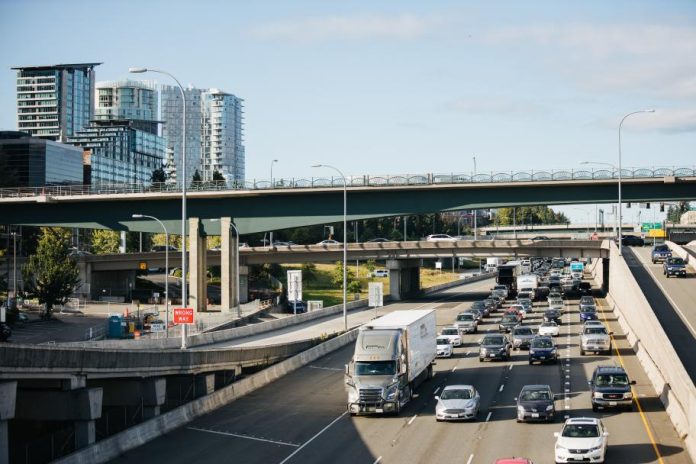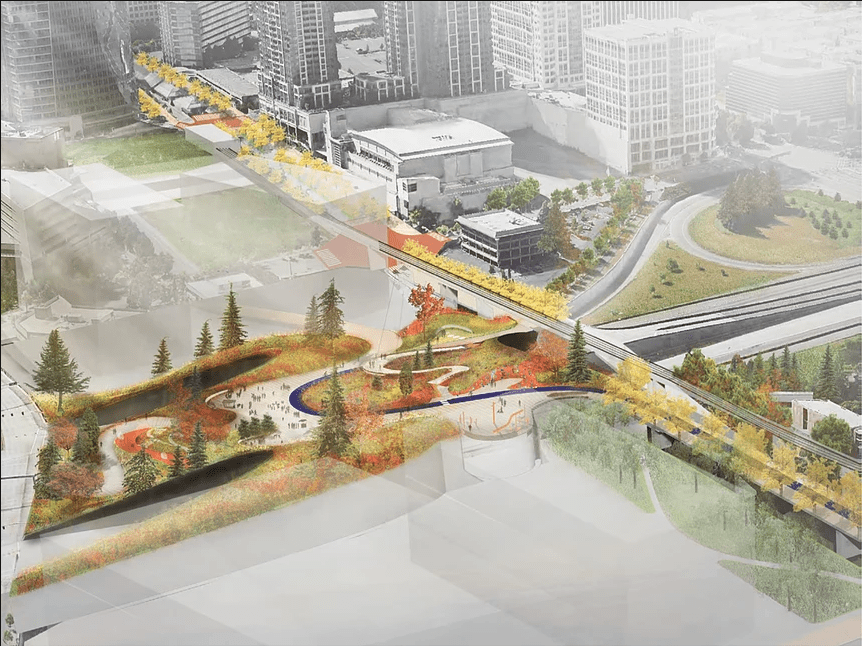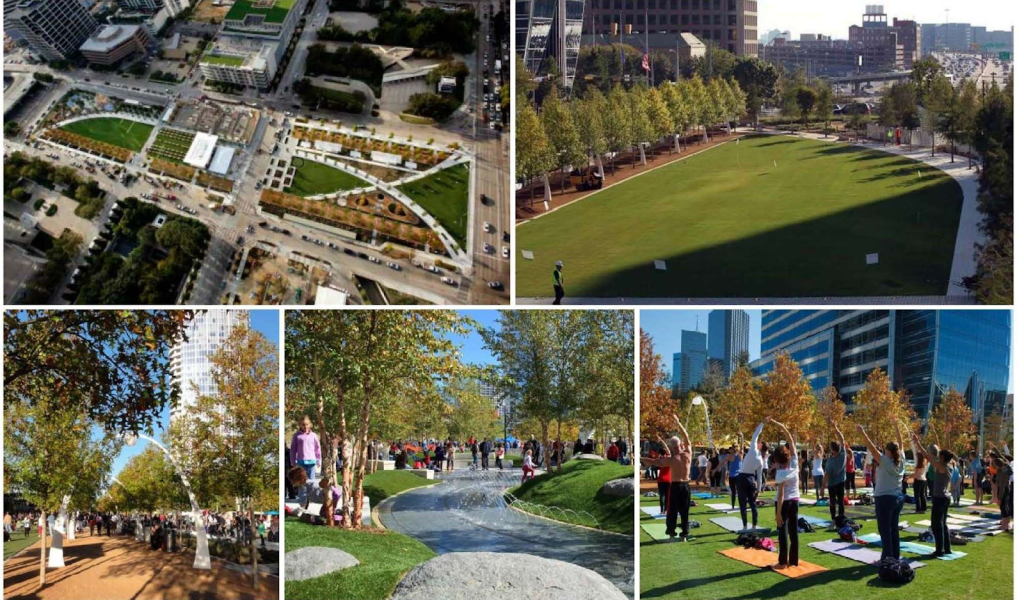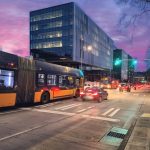
Cities across the country have poured billions and billions into ineffective road infrastructure projects that are leaving them deep in traffic and even deeper in debt. Here in Seattle, we’ve expanded so many roads thinking that traffic would gradually disappear after each ribbon-cutting (I’m looking at you, Mercer Mess), but it simply hasn’t happened. And Bellevue is about to make the same mistake again.
A Concrete Jungle
Throughout the last few months, Bellevue’s city council has been studying a new interchange in South Downtown that would add ramps between I-405 to local streets. There’re five final alternatives for the interchange on the table–including a no-build option–from which the city is set to make a final decision in the coming months.
From a driver’s perspective, it would seem that a new interchange would be a nice thing to have. I-405 through Bellevue is already among the most congested roadways in the state, and the interchanges all tout to “add new access to I-405”, “minimize traffic congestion”, and “reduce intersection delays”. But the question is really whether the new interchange would actually live up to those promises (spoiler alert: it won’t).
Strangely, instead of advertising how much time individual drivers would save, the online engagement website for the new interchanges only mentions the number of “daily person hours” that might be saved–a metric that makes absolutely no sense. Think of it this way: the first alternative for the new interchange (a southbound on-ramp from Lake Hills Connector) could save 500 daily person hours. But how much would that be per person? If 15,000 cars used the ramp each day, each individual driver would only save two minutes. That’s well within the margin of error for a freeway commute, and hardly enough time for anyone to be productive.
This isn’t even mentioning that all the interchange alternatives apart from the no-build option cost a boatload of money. The costliest choice, which includes a bridge across SE 6th Street and toll lane ramps onto I-405, comes in at a hefty $325 million (but it could save 1,400 daily person hours!)
Indeed, the transportation department seems to understand this. In two graphs tucked behind miles of paperwork from a closed-door stakeholder meeting, there’s a startling realization: even according to Bellevue’s own estimates, any of the new interchanges would reduce travel times by less than one minute per person. These time savings estimates are usually overly optimistic since they don’t account for induced demand. But in this case, that wasn’t enough to make the project look good.

This is an abomination. Bellevue already has plenty of interchanges connecting to I-405–four within a one-mile stretch–and saving one minute tops is a tiny improvement on a 20-minute trip. Any reasonable person would understand that blowing hundreds of millions of dollars on something with so little benefit is absurd. It’s perplexing as to why this interchange project is still a thing, especially considering Covid-related budget shortfalls worldwide.
What’s even weirder is that these graphs aren’t even on the same website as the one the public is given to provide feedback–the only metric people are given is misleading “daily person hours” one that makes the interchanges seem way more useful than they actually are. Corporations get sued for this. Why isn’t our own government being upfront and transparent? Could a new interchange just be a highway lobby giveaway grab funded with taxpayer money?
Induced demand dictates that if you want to reduce congestion, you build transit. You take steps to prevent congestion at its root, to stop people from driving in the first place. I don’t blame policymakers for wanting to expand roads; when I first learned about induced demand, I found the idea hard to grasp as well. The whole thing seemed counterintuitive: how could wider roads possibly make traffic worse? Alas, it wasn’t that the topic itself that was hard to grasp, but the fact that it went against my prior convictions.
The facts don’t lie: we don’t need a new interchange. It’s time for Bellevue to take a deep breath, and let it all go. Downtown Bellevue is growing rapidly and leaders claim they’re prepared for their Amazon boom, but this is not how to do it.
What could $325 million buy? Ways we can better spend the interchange’s money.
$325 million is a lot of money. Seriously. So rather than spending it on a new interchange, let’s put our funds to good use by building something the community will actually enjoy.
One thing we could do is build a lid over I-405 and connect both sides of the freeway with a welcoming, pedestrian-oriented space. Dallas’s Klyde Warren Park, a massive 5.2-acre lid over the city’s Woodall Rodgers Freeway, has become a centerpiece of the Downtown community and features beautiful lawns, landscaping, and live events. Its cost? A mere $109 million. We could do the same thing in Bellevue.

In fact, Bellevue’s own Grand Connection plans could call for a lid park over I-405, something that could greatly rehab Bellevue’s lackluster walkability and turn its downtown into a center for pedestrian activity. Pumping interchange funds into the Grand Connection could greatly accelerate its realization.
Or how about some much-needed public housing? Affordable housing units, while not cheap, cost pennies compared to an interchange, and would be infinitely more beneficial. The last thing we should spend money on is yet another interchange.
The City is Bellevue is currently looking for public input on the interchange alternatives. You can give feedback here. The survey closes at 5pm on Friday, February 19th.
Brandon Zuo is a high schooler and enjoys reading about urban planning and transportation. They enjoy exploring the city on the bus and on their bike. They believe that income and racial equality should be at the forefront of urban development. Brandon Zuo formerly wrote under the pseudonym Hyra Zhang.



